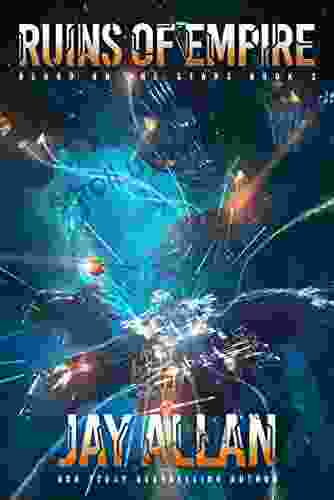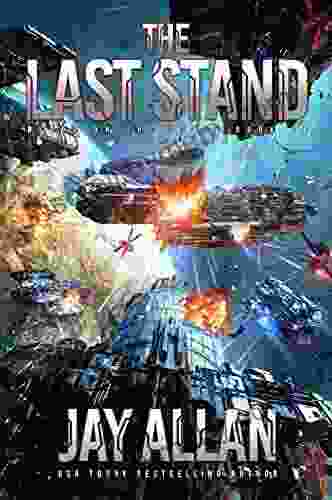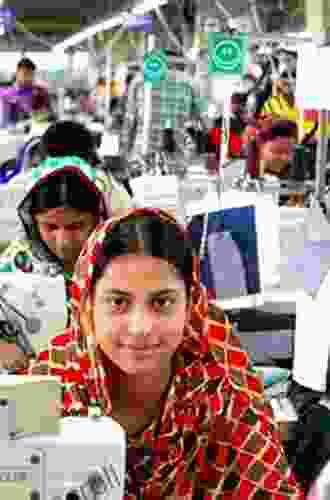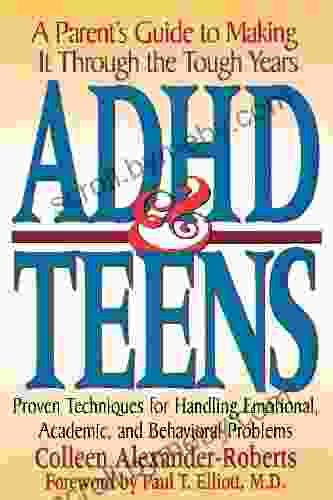The Case of the Bangladesh Garment Industry: Uncovering Labor Practices, Ethical Concerns, and Sustainability

4.9 out of 5
| Language | : | English |
| File size | : | 487 KB |
| Text-to-Speech | : | Enabled |
| Screen Reader | : | Supported |
| Enhanced typesetting | : | Enabled |
| Word Wise | : | Enabled |
| Print length | : | 152 pages |
The Bangladesh garment industry, a global powerhouse for apparel manufacturing, has come under increasing scrutiny in recent years over labor practices, ethical concerns, and sustainability issues. This article delves into the complexities of the industry, examining the challenges and opportunities for improvement.
Working Conditions and Labor Practices
The working conditions in many Bangladesh garment factories have been described as deplorable, with workers facing long hours, low wages, and unsafe working environments. A major concern is the prevalence of child labor, despite being illegal in Bangladesh. Moreover, workers often have limited bargaining power and face discrimination based on gender, age, and religion.
In 2013, the Rana Plaza disaster, where an eight-story building collapsed killing over 1,100 workers, exposed the shocking working conditions in the industry. This tragedy led to international outrage and prompted calls for improved safety measures and labor rights.
Ethical Concerns
Beyond labor practices, the Bangladesh garment industry has also faced criticism over ethical concerns, particularly regarding the use of sweatshop labor and forced overtime.
Many garment workers are employed on short-term contracts and paid below the minimum wage. They may be forced to work excessive hours without overtime pay and subjected to harsh treatment and verbal abuse.
Furthermore, the industry has been linked to the trafficking of women and children from rural areas into the factories.
Sustainability Issues
The Bangladesh garment industry also faces sustainability challenges, including environmental pollution, water waste, and energy consumption.
The factories often use harmful chemicals in the production process, which can pollute the air and water sources. Additionally, the industry contributes significantly to greenhouse gas emissions due to the high energy consumption for production and transportation.
Challenges and Opportunities for Improvement
Addressing the challenges faced by the Bangladesh garment industry requires a multifaceted approach involving governments, brands, consumers, and industry stakeholders.
- Strengthening Labor Laws and Enforcement: Governments must implement and enforce labor laws that protect workers' rights, ensure safe working conditions, and eliminate child labor.
- Improving Wages and Benefits: Brands and retailers should increase wages and provide benefits to ensure workers can earn a decent living.
- Promoting Transparency and Traceability: Supply chains need to be transparent to ensure ethical practices are followed throughout the production process.
- Encouraging Corporate Social Responsibility: Brands and retailers should take responsibility for the ethical and sustainable practices of their suppliers.
- Educating Consumers: Consumers need to be aware of the challenges faced by the industry and support brands that prioritize ethical and sustainable practices.
The Bangladesh garment industry is a complex and challenging sector that requires continued attention and improvement. By addressing labor practices, ethical concerns, and sustainability issues, stakeholders can work together to create a more just and sustainable industry. Only through collaboration and a commitment to change can the Bangladesh garment industry become a model for responsible and ethical manufacturing.
4.9 out of 5
| Language | : | English |
| File size | : | 487 KB |
| Text-to-Speech | : | Enabled |
| Screen Reader | : | Supported |
| Enhanced typesetting | : | Enabled |
| Word Wise | : | Enabled |
| Print length | : | 152 pages |
Do you want to contribute by writing guest posts on this blog?
Please contact us and send us a resume of previous articles that you have written.
 Book
Book Novel
Novel Page
Page Chapter
Chapter Text
Text Story
Story Genre
Genre Reader
Reader Library
Library Paperback
Paperback E-book
E-book Magazine
Magazine Newspaper
Newspaper Paragraph
Paragraph Sentence
Sentence Bookmark
Bookmark Shelf
Shelf Glossary
Glossary Bibliography
Bibliography Foreword
Foreword Preface
Preface Synopsis
Synopsis Annotation
Annotation Footnote
Footnote Manuscript
Manuscript Scroll
Scroll Codex
Codex Tome
Tome Bestseller
Bestseller Classics
Classics Library card
Library card Narrative
Narrative Biography
Biography Autobiography
Autobiography Memoir
Memoir Reference
Reference Encyclopedia
Encyclopedia Cyrus C M Mody
Cyrus C M Mody David Garfinkel
David Garfinkel Colleen Russo Johnson
Colleen Russo Johnson D Enette Larson Meyer
D Enette Larson Meyer Craig Robinson
Craig Robinson Claudio De Castro
Claudio De Castro Cor Van Den Heuvel
Cor Van Den Heuvel Cosmas Inyang
Cosmas Inyang Steven R Terrell
Steven R Terrell Zack O Malley Greenburg
Zack O Malley Greenburg Clark Lee
Clark Lee Jd Mader
Jd Mader Stephanie Vandrick
Stephanie Vandrick Cosmic Publications
Cosmic Publications D C Haenlien
D C Haenlien Patrick E Mcgovern
Patrick E Mcgovern D Levesque
D Levesque Collins Easy Learning
Collins Easy Learning Colin Powell
Colin Powell Connor Hoover
Connor Hoover
Light bulbAdvertise smarter! Our strategic ad space ensures maximum exposure. Reserve your spot today!
 George R.R. MartinFollow ·10.1k
George R.R. MartinFollow ·10.1k Carson BlairFollow ·3.9k
Carson BlairFollow ·3.9k Ian PowellFollow ·5.7k
Ian PowellFollow ·5.7k Jacob HayesFollow ·17.2k
Jacob HayesFollow ·17.2k Truman CapoteFollow ·6.2k
Truman CapoteFollow ·6.2k Allen ParkerFollow ·11.7k
Allen ParkerFollow ·11.7k José MartíFollow ·6.1k
José MartíFollow ·6.1k Thomas MannFollow ·14.7k
Thomas MannFollow ·14.7k

 Cruz Simmons
Cruz SimmonsUnveiling the Secrets: An Insider Guide to School Bonds...
Unlock the Power of School...

 Gil Turner
Gil TurnerRuins of Empire: Blood on the Stars - The Epic Space...
Ruins of Empire: Blood on the Stars is the...

 Allen Ginsberg
Allen GinsbergPrepare for the Ultimate Space Opera: Delve into The Last...
Embark on an...

 Anton Foster
Anton FosterUnleash Your Inner Artist: The Ultimate Guide to Oil...
Chapter 1: The...
4.9 out of 5
| Language | : | English |
| File size | : | 487 KB |
| Text-to-Speech | : | Enabled |
| Screen Reader | : | Supported |
| Enhanced typesetting | : | Enabled |
| Word Wise | : | Enabled |
| Print length | : | 152 pages |
















